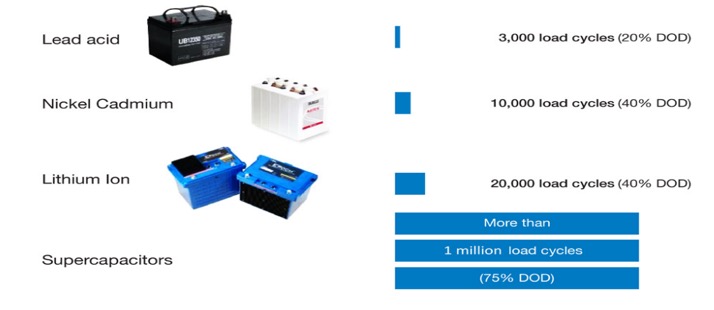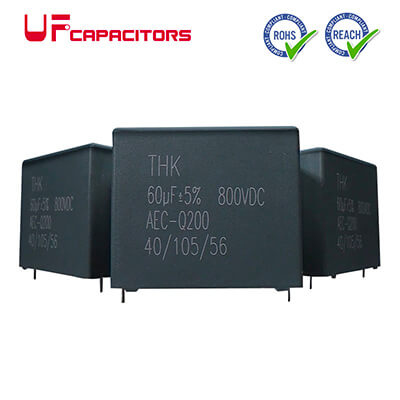Differences between Supercapacitors and Batteries
Batteries and supercapacitors are two distinct technologies that provide energy storage solutions for various applications. While both serve the purpose of storing electrical energy, they differ significantly in terms of construction, functionality, and performance. In this article, we will delve deeper into the key differences between supercapacitors and batteries, exploring their unique characteristics, specifications, capabilities, and applications.
Cycle Life
One important distinction between batteries and supercapacitors lies in their cycle life. Batteries undergo reversible electrochemical reactions during the charge and discharge processes, which gradually result in electrode and electrolyte degradation. The degradation mechanisms can include electrode material dissolution, electrolyte decomposition, and side reactions. Over time, these processes reduce the battery’s performance and overall lifespan.
On the other hand, supercapacitors operate based on non-Faradaic charge storage, meaning they don’t involve chemical reactions. Instead, they store charges electrostatically on their electrode surfaces or within the electric double layer. As a result, supercapacitors experience minimal chemical and phase changes during charge and discharge cycles, leading to significantly longer cycle life compared to batteries.

Operating Temperature
Temperature plays a crucial role in the performance and safety of energy storage systems. Batteries typically have a restricted temperature range for optimal operation. Both very low and high temperatures can negatively impact battery performance, resulting in reduced energy output, slower charge and discharge rates, and compromised safety. Extreme temperatures can even lead to irreversible damage or complete failure of the battery.
In contrast, supercapacitors exhibit better resilience to temperature variations due to their different operating principles. They generally have lower internal resistance and operate through an electrostatic charge storage process. These factors allow supercapacitors to withstand a wider temperature range without significant performance degradation or safety concerns. Consequently, supercapacitors are well-suited for applications that involve extreme temperatures, such as automotive systems in cold climates or industrial machinery operating in hot environments.
Energy Density
Energy density refers to the amount of energy that can be stored within a given volume or mass of an energy storage device. Batteries typically have higher energy densities compared to supercapacitors. This is primarily because batteries store electrical energy in a chemical form, allowing them to achieve higher energy storage capacity. The chemical reactions within batteries enable the storage of greater amounts of energy per unit weight or volume.
Supercapacitors, on the other hand, rely on an electrostatic charge storage mechanism. While this provides advantages in terms of high power density (which we will discuss later), it leads to lower energy density compared to batteries. Supercapacitors are generally better suited for applications that prioritize power bursts, rapid charge and discharge capabilities, and short-term energy needs, rather than long-term energy storage.
Power Density and Charge/Discharge Time
Power density refers to the ability of an energy storage device to deliver high-power bursts quickly. Supercapacitors excel in power density due to their unique charge storage mechanism. They can rapidly charge and discharge large amounts of electrical energy within very short intervals. This makes supercapacitors ideal for applications that require immediate power delivery, such as regenerative braking systems in electric vehicles or dynamic loads in industrial equipment.
On the other hand, batteries, while having lower power density compared to supercapacitors, offer sustained power delivery over longer periods. Batteries can deliver a continuous and steady current draw, making them suitable for applications that require prolonged energy supply, such as electric vehicle propulsion or off-grid renewable energy systems.
Efficiency
Efficiency is an important aspect to consider when comparing energy storage technologies. Supercapacitors have high round-trip efficiency, meaning they can efficiently convert stored energy back to electrical power during charge and discharge cycles. This efficiency is primarily due to the absence of significant heat generation within supercapacitors, resulting in minimal energy loss during the energy conversion process.
On the other hand, batteries tend to have lower round-trip efficiency compared to supercapacitors. Battery systems generate heat due to various electrochemical processes, such as resistance within the electrodes and electrolyte, side reactions, and polarization effects. This heat generation leads to power dissipation and reduced overall efficiency of the battery system. However, it’s worth noting that battery technology is continuously advancing, with manufacturers working to improve the efficiency of battery chemistries and designs.
Management Systems
Energy storage systems often require sophisticated management systems to monitor and control various parameters to ensure optimal performance, safety, and longevity. Battery management systems (BMS) are widely used in battery-based energy storage solutions. BMS monitor cell voltages, temperatures, and other factors, and perform functions like cell balancing, state-of-charge estimation, and battery protection mechanisms.
Supercapacitor modules, on the other hand, have inherent robustness and require less complex management systems compared to batteries. Supercapacitors have a simpler charge and discharge profile, and their internal resistance is lower, allowing for easier voltage balancing. However, supercapacitor modules still benefit from monitoring and control systems to ensure optimal operation and prevent voltage imbalances among individual capacitors.
Conclusion,Supercapacitors and batteries are energy storage technologies with distinctive characteristics, advantages, and applications. Supercapacitors offer advantages in terms of high power density, rapid charge and discharge capabilities, long cycle life, and wide temperature range tolerance. They are well-suited for applications that require immediate power bursts, backup and emergency power supplies, and high-cycle life requirements.
Batteries, on the other hand, excel in energy density, sustained power delivery, and higher storage capacities. They are commonly used in applications that demand long-term energy storage, continuous power supply, and higher energy requirements.
Understanding the differences between supercapacitors and batteries allows for informed decision-making when selecting the most suitable energy storage solution for specific requirements. It’s worth noting that hybrid energy storage systems combining both supercapacitors and batteries can offer the benefits of high power density and energy density, providing versatile solutions for a wide range of applications.




